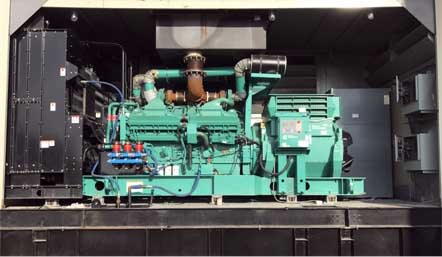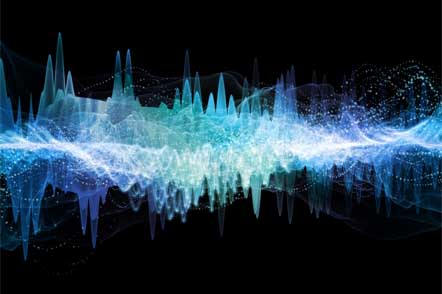
These silencers can come in various shapes such as, rectangular, oval, and round. The shape selected is determined by the space available. They are commonly used in generators located in sound attenuated enclosures. The silencers must meet National Fire Protection Association (NFPA) guidelines.
When a generator operates in a combustible environment, changes must be made to the exhaust system to ensure that sparks generated in the combustion process are not emitted to the outside atmosphere. Spark arrested silencers are generally cylindrical in shape and of a modified reactor design. This allows the carbon sparks to circulate in the silencer dropping into a collection box. The collection box must be cleaned as part of the maintenance program.
Exhaust gases can reach temperatures of up to 1400 degrees Fahrenheit. These gases are often passed into the atmosphere. Heat recovery silencers are used to utilize the heat from the exhaust gases before it is passed to the atmosphere. This heat supply can be used for any system that requires an external heat supply (heated water). To view a chart on exhaust properties and temperatures
click here.
Emission Control Silencers

Combustion gases are comprised of many of gases. Some of the gases are extremely harmful and some are not so harmful. The Environmental Protection Agency (EPA) enforces exhaust regulations to reduce harmful exhaust gas emissions.
The EPA closely regulates emissions for generators that supply main power to a facility. Current Tier IV regulations require the use of a catalytic converter. The basic converter is constructed of a honeycomb grid design that is placed in the exhaust system directly after the exhaust manifold. This location allows the exhaust gas to be at the maximum temperature needed for proper operation. Many new silencers combine the converter design with the silencer.
Particulate matter content of the exhaust gas is also addressed in Tier IV regulations. Particulate matter filters can be used to reduce the soot content of the exhaust. The interior of the filter is constructed of ceramic material. Exhaust gas passes over the material, soot is collected. Lean burn engines can also employ an additive to further reduce harmful emissions.
ADVANCED EMISSIONS SYSTEMS ARE NOT REQUIRED FOR EMERGENCY OR BACKUP GENERATORS.
Sound Rating for Generator Silencers

The sound intensity emitted from an exhaust system is measured in Decibels (dB). The dB is a unit of measurement used to express the ratio of one physical property to another represented on a logarithmic scale. Decibel A Weighted (dBA) is measurement used to approximate the human ear response to sound.
In the early days of rating silencers, there were four basic grades. Industrial, commercial, residential, and hospital grades were considered the industry standard in silencer manufacturing. During this period, the amount of sound reduction for grade varied between manufacturers. The Electrical Generating Systems Association (EGSA) developed a rating guide that provided consistent silencer ratings for any manufacturer belonging to the association. This has become industry standard for manufacturing.
Common grades are:
- Industrial Grade - Exhaust noise reduction of 15 to 20 dBA
- Residential Grade - Exhaust noise reduction 20 to 25 dBA
- Critical Grade - Exhaust noise reduction of 25 to 32 dBA
- Super Critical Grade - Exhaust noise reduction 30 to 38 dBA
- Hospital Grade - Exhaust noise reduction of 35 to 42 dBA
- Hospital Plus Grade - Exhaust noise reduction of 35 to 50 dBA
- Extreme Grade - Exhaust noise reduction of 40 to 55 dBA
- Super Extreme Grade - Exhaust noise reduction of 45 to 60 dBA
Every silencer and style may not be available in all grades. Each manufacturer produces various styles in different grades. Style production cost and physical capabilities of the silencer dictate grade availability.
Additional Resources
- The EGSA has a useful PDF guide on Rating Generator Silencers.